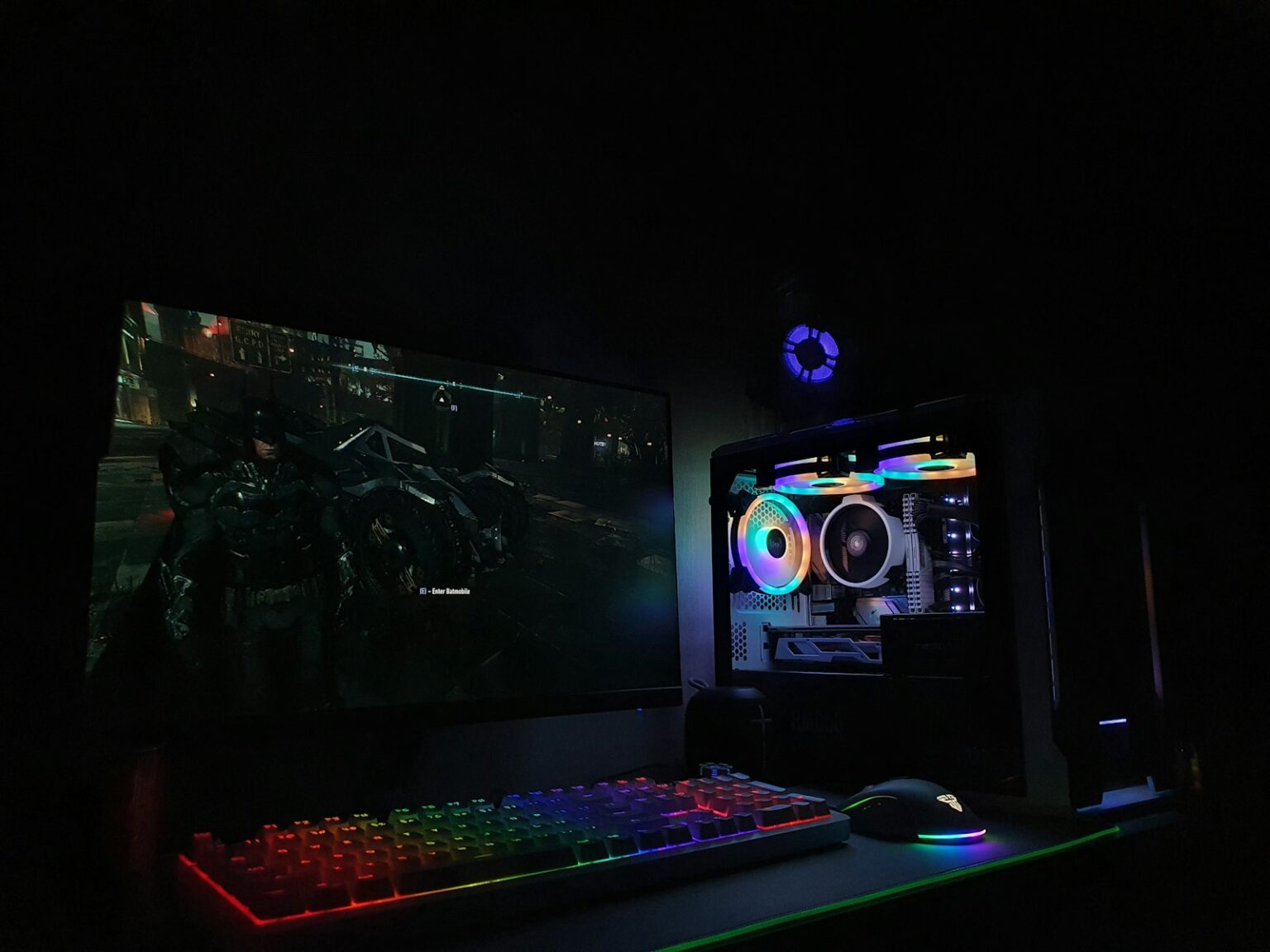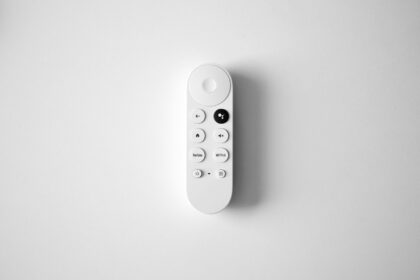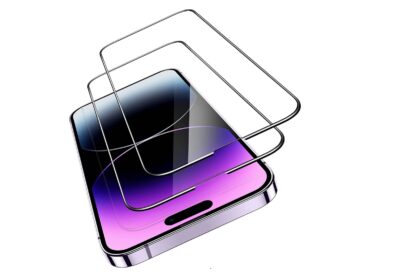Keeping your graphics card inside a safe heat range matters for steady frame rates and long hardware life. Typical idle readings sit near 30–45°C, while active play often lands in the mid‑60s to mid‑80s °C. Brief spikes above that can happen depending on the title and cooling.
Top models tolerate higher peaks: some GeForce flagships handle around 90°C, and certain Radeon hotspot sensors can read near 110°C. Those extremes are not meant for long sessions, and sustained high readings speed wear and may trigger throttling.
Room heat and case airflow can shift numbers by roughly 5–15°C. Monitor temps regularly so you catch rising heat early; adjustments like better airflow, cleaning, tuned fan curves, or mild undervolting often bring readings back into a comfortable range.
Key takeaways: aim for mid‑30s at idle and mid‑60s to mid‑80s while playing; act if readings stay near 90°C; ambient and case design change results.
Why GPU Temperature Matters for Performance and Longevity
When core temperatures climb, the card trims speed to prevent damage. This automatic cut in clock rates is called thermal throttling, and it shows up as lower frame rates and sudden stutter during heavy loads.
Listen for loud fans and watch for visual glitches; these are early signs that cooling needs attention. If ignored, sustained heat will dry thermal paste and stress power delivery, shortening the life of the graphics subsystem.
- Immediate impact: crossing a thermal margin forces throttling and drops performance.
- Visible symptoms: loud fans, intermittent stutter, artifacts, crashes or shutdowns.
- Long term: paste degradation, fan wear, and worn components reduce lifespan.
Heat also raises the temperature of nearby parts, which can destabilize the whole system. Heavy gaming or long render jobs push readings faster than light desktop use, so learn your normal temperatures to spot spikes early. Proactive maintenance preserves peak performance and avoids costly replacements.
| Issue | Cause | Immediate Sign | Long-term Effect |
|---|---|---|---|
| Throttling | High core temps | Frame drops / stutter | Reduced short-term performance |
| Fan stress | Constant high RPM | Loud noise | Fan failure, increased noise |
| Thermal paste wear | Sustained heat | Rising idle temps | Poor heat transfer, higher temps |
| System impact | Radiant heat | Instability | Shortened component life |
What Is a Good GPU Temperature for Gaming?
Sensible ranges keep performance steady and parts healthy. Modern cards idle near 30–45°C and commonly hit 65–85°C during 3D play. Lighter titles and desktop work sit lower, while intense scenes push numbers up briefly.
Safe ranges: idle vs. under load today
Aim for headroom. Idle in the mid‑30s leaves room for longer sessions. Under load, staying below the mid‑80s avoids frequent throttling on most boards. Brief spikes toward limits can be normal but avoid sustained peaks.
NVIDIA GeForce RTX vs. AMD Radeon: architecture limits
Many GeForce RTX cards list core limits near 90–91°C. AMD Radeon models use hotspot sensors that can read higher — sometimes near 110°C on flagship chips — even when average core temps are lower. Know which sensor your card reports.
Ambient room heat and case airflow impact
Warm rooms add roughly 5–15°C to readings. Good intake and exhaust, clean filters, and tidy cables cut load temps without hardware changes. Compact builds and blower coolers often run warmer than open‑air designs.
Quick check rule:
- If load readings routinely exceed the mid‑80s, inspect case air, dust, and fan behavior.
- Maintain headroom below vendor limits so hot days don’t cost performance.
| Condition | Typical Range | Vendor Notes |
|---|---|---|
| Idle | 30–45°C | Normal for most modern gpus |
| Gaming load | 65–85°C | Depends on game and case airflow |
| GeForce RTX peak | ~90–91°C core | Many models tolerate brief peaks |
| Radeon hotspot | Up to ~110°C (sensor) | Hotspot can read higher than average temp |
How to Check Your GPU Temperature on Windows and In-Game
You can quickly view card heat readouts without extra software using built‑in Windows and vendor overlays. Start with Windows to see a baseline before trying overlays or third‑party apps.
Windows Task Manager Performance tab
Press Ctrl+Shift+Esc, select the Performance tab, then click your dedicated GPU. The GPU Temperature field shows a simple live reading you can use to check idle and load values.
GeForce Experience overlay
Open GeForce Experience and enable the In‑Game Overlay. Go to HUD Layout → Performance → Advanced, then toggle the overlay in‑game (Alt+R) to monitor temps and fps while you play on a GeForce RTX card.
AMD Radeon Software (Adrenalin)
In Adrenalin, open Performance to view temps. Enable the In‑Game Overlay via Settings → Preferences, then Performance → Overlay → Show Metrics Overlay to keep readings visible during play.
Third‑party tools and in‑game reads
Open Hardware Monitor and HWiNFO expose many sensors (core, hotspot, memory, fan RPM). GPU‑Z is a lightweight sensor readout. MSI Afterburner adds an OSD and fan curve controls so you can check temps without leaving the game.
- Quick tips: validate that fans ramp under load, keep the HUD minimal, and note your normal idle versus load numbers.
| Method | How to open | Best use | Notes |
|---|---|---|---|
| Task Manager | Ctrl+Shift+Esc → Performance tab → GPU | Quick baseline, no install | Shows a single, simple temp readout |
| GeForce Experience | In‑Game Overlay → HUD Layout → Performance | On‑screen temps for GeForce RTX cards | Toggle with Alt+R in game |
| AMD Adrenalin | Settings → Preferences → Performance → Overlay | Real‑time metrics for AMD Radeon | Includes utilization, clocks, and temps |
| Third‑party tools | Open Hardware Monitor, GPU‑Z, HWiNFO, MSI Afterburner | Detailed sensors, logging, and OSD | Best for hotspot, fan RPM, and long logs |
When Is a GPU Too Hot? Thresholds, Warning Signs, and Next Steps
High sustained readings signal it’s time to act, not just monitor. Treat roughly ~85°C during heavy play as a caution. If readings climb and linger near ~90°C, stop the session and diagnose immediately.
Early warnings include loud fans, rising numbers, and micro‑stutter. These show the gpu is approaching its throttling margin and may reduce clocks to protect silicon.
More serious symptoms are easy to spot: visual artifacts, crashes, or sudden shutdowns. Those signs mean the graphics card is under dangerous stress and can suffer long‑term harm if ignored.
- Clear thresholds: ~85°C = caution; ~90°C = stop and diagnose.
- Recognize warnings: noisy fans, small stutters, steady temp rise.
- Serious signs: flicker, odd colors, app crashes, shutdowns.
Immediate steps: pause your games and let temps fall. Inspect case airflow, clean dust from fans and filters, and adjust fan curves or power limits before you resume play.
| Action | When to do it | Expected result |
|---|---|---|
| Pause session | Peaks > ~90°C for minutes | Lower temps, stop throttling |
| Clean fans/filters | Persistent high readings | Better airflow, lower temps |
| Retune fan curve | Loud fans but high temps | Balanced noise and cooling |
Pro tip: log temperatures, the game, and room conditions after fixes to confirm improvements and spot long‑term overheating trends.
Common Causes of High GPU Temperatures
High utilization from rendering or intensive titles forces cards to produce more heat. Demanding games, long video rendering jobs, and AI/ML workloads drive gpus to 100% and raise thermal output quickly.
Poor case airflow traps warm air. Tight layouts, blocked filters, and cable clutter stop cool air reaching the graphics card. That raises temperatures across nearby components and stresses the whole system.
Dust, fans, and aged coolers
Dust builds up on fans and heatsinks, acting like insulation. Over time this lowers cooling efficiency and speeds overheating. Worn thermal paste or cheap coolers make things worse.
Overclocking and driver settings
Aggressive overclocks or driver profiles that force higher power targets push heat past what the cooling system can handle. Check clocks, power limits, and fan curves with tools like HWiNFO to pinpoint the cause.
- Identify workload spikes: modern games and video rendering push utilization to maximum.
- Inspect case airflow and add or reposition fans if intake/exhaust is blocked.
- Clean dust from fans, filters, and heatsinks on a regular schedule.
- Review overclocks and driver quality settings before blaming hardware.
| Cause | Signs | Quick check | Likely fix |
|---|---|---|---|
| Heavy workloads | High utilization, steady heat | Monitor clocks and load | Lower settings or pause tasks |
| Poor airflow | Hot inlet/exhaust, warm case | Check fan orientation and filters | Improve fan layout, tidy cables |
| Dust & aged paste | Slow fan response, rising idle temps | Inspect heatsink and fans | Clean dust, reapply thermal paste |
| Overclock/driver | Unstable clocks, higher power draw | Reset profiles, use HWiNFO | Reduce clocks or adjust power target |
How to Lower GPU Temperatures: Practical Fixes You Can Do Today
Start by improving how air moves through the case; small changes often cut heat fast. Focus on clear intake and exhaust paths so cool air reaches the graphics card and hot air leaves the system.
Improve cooling systems and add targeted solutions
Case fans and liquid cooling both help. Add at least one front intake and one rear or top exhaust to establish flow. For high‑end cards, consider liquid cooling to hold heavy loads near 60–70°C.
Adjust fan curves with common tools
Use MSI Afterburner or EVGA Precision to build a steeper fan curve. Make fans respond earlier so the card stays cooler without hitting loud RPMs only at limits.
Optimize layout and clean components
Route cables behind the tray and avoid blocking intakes. Clean dust from the shroud, fans, filters, and heatsinks to restore proper cooling performance.
Undervolt and fine‑tune clocks
Lowering voltage often cuts heat by ~5–8°C with little performance loss. Test stability and back off if crashes occur.
Laptop tips and validation
A sturdy cooling stand improves underside air and can shave degrees during long sessions. After each change, monitor the same game scene to confirm results.
| Action | When to use | Expected result |
|---|---|---|
| Reposition/add fans | Poor airflow or high load temps | Better intake/exhaust, lower temps |
| Install liquid cooler | High‑end GPUs under sustained load | Reduced peak temps, stable performance |
| Tune fan curve | Fans ramp late or temps spike | Smoother cooling response, less throttling |
| Clean and reapply paste | Rising idle or dusty system | Improved heat transfer and lower idle |
| Undervolt/reduce clocks | Persistent high temps after airflow fixes | Lower heat with minimal fps loss |
Prevent Overheating Over Time: Maintenance and Smart Settings
Regular upkeep keeps heat from slowly creeping up across seasons. Small, planned checks stop dust and worn interfaces from worsening numbers over time.
Routine cleaning cadence and replacing thermal paste
Clean dust every few months and inspect filters. This keeps airflow strong and fans responsive.
If idle or load readings climb year over year, consider refreshing thermal paste every 2–3 years. Reapplying paste restores proper heat transfer between die and cooler.
Right‑size game settings and disable unnecessary background apps
Lowering settings or capping frame rates reduces sustained load without wrecking the experience. Close launchers and background utilities that keep the gpu busy during long sessions.
Check CPU temps and warranty options before replacing hardware
High cpu temps raise case air and push graphics cards hotter. Fix CPU cooling first to see if that cuts peak readings.
Many cards carry a 3–5‑year warranty. Check warranty status before opening coolers or paying for repairs.
- Schedule care over time: set reminders for dust removal and inspections.
- Refresh paste when needed: restore heat transfer if temps trend upward.
- Minimize background load: close unnecessary apps during long play.
- Log results: track idle and load readings after maintenance to spot patterns.
| Action | When | Benefit |
|---|---|---|
| Dust cleaning | Every 2–4 months | Improved airflow, lower temperatures |
| Paste refresh | Every 2–3 years or if temps rise | Restored cooling efficiency |
| Settings tweak | When loads stay high | Lower sustained heat, stable performance |
Conclusion
,Simple upkeep and smart settings will keep your graphics running smoothly for years.
Aim for mid‑30s °C at idle and roughly mid‑60s to mid‑80s under load to balance performance and lifespan. Brief spikes happen, but sustained readings near ~90°C need immediate fixes.
Monitor with the Task Manager Performance tab, vendor overlays like GeForce Experience or AMD Adrenalin, or trusted third‑party tools. Watch for loud fans, stutter, or artifacts and pause to diagnose.
Prioritize case airflow, regular cleaning, and fan‑curve or undervolt tuning before buying new hardware. With routine care and simple monitoring, your card will avoid overheating and deliver steady gaming results for years.
FAQ
What temperature range should I expect for idle and under load?
Idle temps typically sit between 30–45°C on desktop cards with good airflow. Under gaming load, modern cards often run 65–85°C. Laptops trend higher due to compact cooling, so 70–90°C under load can be normal. Aim to keep sustained gaming temps below the card maker’s maximum spec to avoid throttling or wear.
How does thermal throttling affect game performance?
Thermal throttling reduces clock speeds to lower heat, which causes drops in frame rates and stuttering. When a GPU hits its thermal limit, the driver or firmware scales performance down to protect the hardware, so cooler operation preserves steady frame delivery.
Do NVIDIA GeForce RTX and AMD Radeon cards have different limits?
Yes. NVIDIA and AMD set different temperature targets by architecture. Many GeForce RTX cards allow sustained temps in the 80–85°C area, while some Radeon designs run slightly hotter. Always check the specific model’s specs and recommended limits from NVIDIA or AMD.
How much does room temperature and case airflow matter?
Ambient temperature directly raises GPU temps: a 5–10°C warmer room often produces similarly higher GPU readings. Case airflow matters a lot—intake and exhaust balance, fan placement, and unobstructed vents keep components cooler and reduce fan noise and wear.
How can I check GPU temperature on Windows?
Open Task Manager and go to the Performance tab to see basic GPU temps on Windows 10/11. For detailed monitoring, use tools like MSI Afterburner, HWiNFO, GPU-Z, or Open Hardware Monitor for real‑time graphs and logging.
Can I monitor temps while playing without leaving the game?
Yes. NVIDIA GeForce Experience has an in‑game overlay for performance metrics. AMD Radeon Software Adrenalin offers a metrics overlay too. MSI Afterburner paired with RivaTuner also displays temps in‑game.
When should I worry about a high GPU temperature?
Watch closely when temps hit about 85°C and above. Around 90°C you risk frequent throttling and possible instability. Immediate attention is required if you see artifacts, sudden crashes, or unusually loud fans.
What symptoms indicate overheating besides high numbers?
Look for visual glitches (artifacts), driver crashes, system reboots, severe frame drops, and fans spinning at maximum RPM for extended periods. These signs mean cooling or hardware settings need adjustment.
What common factors cause high graphics card temps?
Heavy loads from modern AAA games, video rendering or AI tasks, blocked case airflow, dust on heatsinks and fans, worn thermal paste, and aggressive overclocking are frequent causes.
What quick fixes can lower GPU temperatures today?
Improve case airflow by adding or reorienting fans, clean dust from fans and filters, tidy cables, set a more aggressive fan curve with MSI Afterburner or EVGA Precision, and consider a laptop cooling pad or a better case for desktops.
Should I consider liquid cooling or aftermarket coolers?
Yes, if air cooling can’t meet your needs. Closed‑loop liquid coolers or large aftermarket air coolers often drop temps several degrees and cut noise. Ensure compatibility and follow installation guides or professional services if unsure.
Is replacing thermal paste worth it?
Replacing old or degraded thermal paste can lower temps noticeably, especially on older GPUs. Use quality thermal compound and follow proper disassembly steps; if your card is under warranty, check terms before opening it.
Can undervolting reduce heat without losing much performance?
Yes. Undervolting lowers power draw and temperatures while often preserving most gaming performance. Tools like MSI Afterburner or AMD Radeon tuning can help find stable undervolt settings safely.
How often should I clean and maintain my system?
Inspect and clean every 3–6 months depending on your environment. Check fans, filters, and heatsinks, and reapply thermal paste every 2–4 years or if temps climb despite cleaning.
When should I consider warranty service or replacement?
If a GPU shows persistent overheating after cleaning, testing in a different case or system, swapping cables, and software checks, contact the manufacturer for RMA. Also consider replacement if physical damage, failed fans, or persistent artifacts appear.
























